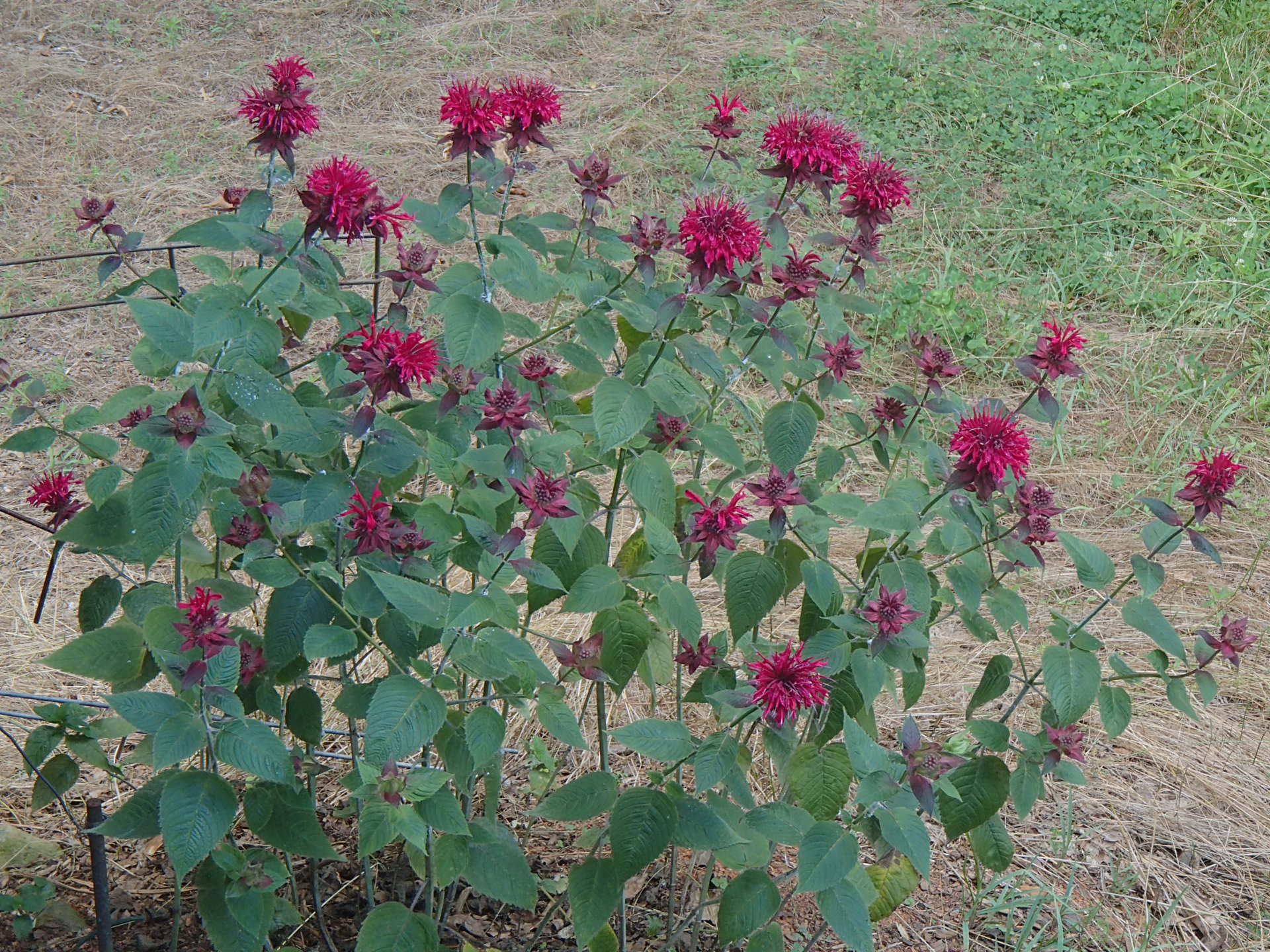Beebalm is a showy herbaceous perennial herb in the Mint family, very popular in Southeastern gardens for its long bloom time and easy nature. Bright red, somewhat coarse flowers are supported by sturdy, three-foot tall, square stems in July and August here in the piedmont, making excellent cut flowers.Our southern Appalachians are actually the southernmost tip of the range of this plant which hales from “Up East” (it is not reported in our piedmont or coastal plain). The leaves are fragrant and have been used to make tea since Europeans were taught how to do so by the American (Oswego) Indians (New York). The plants attract hummingbirds, butterflies (especially fritillaries) and bees, and spread in the garden by rhizomes and by self-seeding. A tendency towards powdery mildew can be minimized by growing in full sun and thinning the stand for better air circulation..
NURSERY HOURS
Wednesday: 10-4 Thursday: 10-6 Friday-Saturday: 10-4 Sunday: 12-4
Monarda didyma

Key Info
Scientific Name: Monarda didyma L.
Common Names: Oswego Tea, Scarlet Beebalm, Crimson Beebalm, Red Bergamot, Horsemint
Family Names: Lamiaceae (Mint) Family
Plant Type: Herbaceous perennial
Leaf Retention: Deciduous
Flower Color: Red
Additional Info
Habit: Clumps of upright stems, hairy, occasionally branched, square in cross section, with basal rosette, spreading by means of shallow, slender, creeping rhizomes.
Height: 2'-4'
Spread: 1'-2'
Soil Conditions: Moist, humus-rich soil; acid, neutral and basic (alkaline) soils; light (sandy), medium (loamy) and heavy (clay) soils.
Leaves: The leaves are opposite on the square stem, ovate to ovate-lanceolate, 3-6” long x 1-3" wide, medium to deep green with coarsely toothed margins and reddish leaf veins. They are glabrous or sparsely pubescent above, with more hairs below. The leaves emit a minty fragrance when bruised or crushed.
Flowers (or reproductive structures: Scarlet Beebalm’s large, red, scentless, nectar-rich flowers occur as dense, rounded, terminal, head-like cymes, 3-4 inches across, subtended by a whorl of showy, reddish, leafy bracts. Each flower is a cluster of bright red, tubular, perfect florets up to 1½ inches long, narrow, and two-lipped. The lobes and stamens of individual florets give the flower clusters a ragged appearance.
Fruit: Flowering is followed by a crop of ovoid nutlets on the terminal seed heads in late summer/fall.
Natural Distribution: Moist, open woods; meadows; mountains to 6500 feet; dense clusters along stream banks, thickets and ditches.
USDA Hardiness Zone: 4 to 9
USDA Wetland Indicator Status in NC: FAC
Pollination: Attracts hummingbirds, butterflies, bees; pollinated primarily by ruby-throated hummingbirds and butterflies, especially fritillaries.
Wildlife Connections: The plentiful nectar of the flowers attracts hummingbirds, Swallowtail butterflies, and probably bumblebees. The caterpillars of various moths feed on Monarda spp., including the Gray Marvel, Hermit Sphinx, and Pyralid Moths. The aromatic foliage of Bee Balm is disagreeable to mammalian herbivores and it is rarely eaten.(Illinoiswildflowers.info)
Propagation: By division in spring or fall, also by seed.
